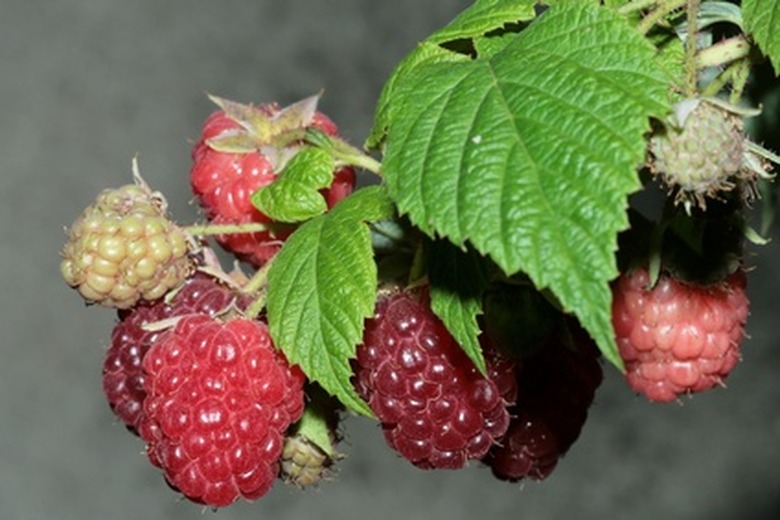Raspberry Leaf Identification
Raspberry plants flourish in the wild and can easily take over an area with canes. As the hardiest variety of cane berries, these can form into brambles with thorns and lots of dense foliage and leaves. Although there are yellow and purple varieties, the most common are black and red raspberries. It can be difficult to identify a raspberry plant unless there is a fruit harvest heavy on the branches, but it is helpful to understand how to identify the plant by just the foliage alone.
Shape and Color
Raspberry plant leaves are divided into three to five leaflets that spread outward apart. The largest leaflet is located in the center. The leaf edges are serrated, with some ranging from fine to very noticeably jagged. Raspberry leaves are usually larger in width than in length, with more of an oblong shape rather than round. Leaf colors range from light green (for very young plants) to medium dark green. In the winter, the leaves curl up and become a darker hue like brownish green.
- Raspberry plants flourish in the wild and can easily take over an area with canes.
- As the hardiest variety of cane berries, these can form into brambles with thorns and lots of dense foliage and leaves.
Formation
The formation of the plant is important to the leaf shape, as this plant grows more with canes than branches with leaves just hanging off. The canes grow straight up almost vertical, and can trail in many directions since they bend over into the ground and take root for a new cane. The canes themselves have a purple hue, particularly in the dormant season. Raspberry leaves alternate from many nodes on the canes, but do not grow in tight clusters.
Size
The size of a raspberry plant is contributed to the thickets of leaves that grow, especially when a plant is very mature. This deciduous shrub grows from 1 1/2 to almost 10 feet tall, depending on the climate and location. These thickets can be spotted from quite far away, especially if they are large.
- The formation of the plant is important to the leaf shape, as this plant grows more with canes than branches with leaves just hanging off.
Location
Raspberry leaves can only be identified where raspberry plants grow, which is in most temperate areas of the globe. This includes Alaska, the northern United States and southern Canada in North America. Raspberry plants also thrive in woodland areas and places where fires have burned down previous vegetation.
Thorns and Flowers
Raspberry leaves have tiny thorns on the bottom, and the thorns connect to the canes and trail down, becoming much thicker toward the bottom 12 inches of the plant. Raspberry leaves have delicate white flowers that bloom in the late spring season. The flowers may be near clusters of dead fruit from the previous season.
